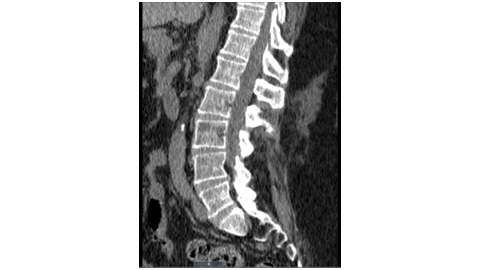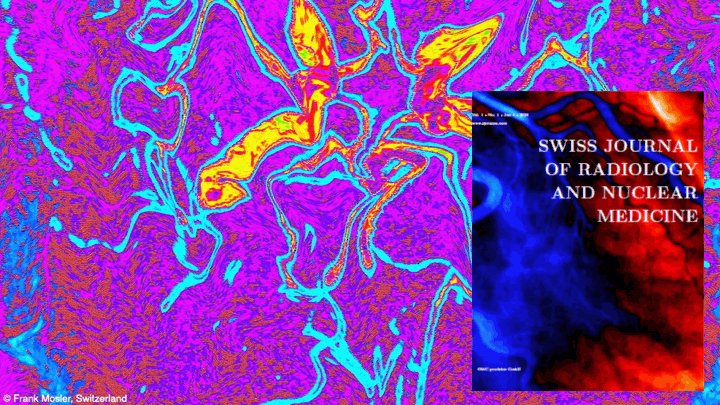The Eccentric Case of Thoracic Spinal Hemangioma Masquerading as Cauda Equina Syndrome
Clinical Pathophysiological Traits and Management Aspects
DOI:
https://doi.org/10.59667/sjoranm.v24i1.14Keywords:
Spinal hemagioma, cauda equina syndrome, spinal cord compression, vertebral fracture, myelopathy, radiculopathy, spinal surgery and radiationAbstract
We present a case of spinal hemangioma with clinical presentation with lower limb weakness, loss of sensation, back pain, urinary retention and difficulty in bowel movements for 9 months. Patients presenting with lumbar myeloradiculopathy should be carefully evaluated to distinguish it from cauda equina syndrome, spinal dural fistula, spinal cord tumors, and metastasis Evaluation including MRI brain and CT scan lumbar spine were within normal limits. Further workup including CT scan and MRI thoracic spine revealed T5 vertebral body spinal hemangioma with spina cord compression at T5-T6. The main pathology here is slowly progressive tumor that that power to scrunch the spinal cord and shatter the vertebra, thereby ushering the onset of myeloradiculopathy. Neurosurgery was consulted and they decided to perform a preoperative embolization, and surgical decompression. Recurrence of symptoms despite surgical intervention might necessitate administration of radiation therapy. The neuronal recovery following surgery might be prolonged given the degree of spinal cord injury.
References
1. Manning, H. J. (1951). "Symptomatic hemangioma of the spine." Radiology 56(1): 58-65. https://doi.org/10.1148/56.1.58
2. Fox, M. W. and B. M. Onofrio (1993). "The natural history and management of symptomatic and asymptomatic vertebral hemangiomas." J Neurosurg 78(1): 36-45. https://doi.org/10.3171/jns.1993.78.1.0036
3. Pastushyn, A. I., et al. (1998). "Vertebral hemangiomas: diagnosis, management, natural history and clinicopathological correlates in 86 patients." Surg Neurol 50(6): 535-547. https://doi.org/10.1016/S0090-3019(98)00007-X
4. Barzin, M. and I. Maleki (2009). "Incidence of vertebral hemangioma on spinal magnetic resonance imaging in Northern Iran." Pak J Biol Sci 12(6): 542-544. https://doi.org/10.3923/pjbs.2009.542.544
5. Slon, V., et al. (2015). "Vertebral hemangiomas: their demographical characteristics, location along the spine and position within the vertebral body." European Spine Journal 24(10): 2189-2195. https://doi.org/10.1007/s00586-015-4022-y
6. Abul-Kasim, K., et al. (2023). "Vertebral Hemangiomas: Prevalence, new classification and natural history. magnetic resonance imaging-based retrospective longitudinal study." Neuroradiol J 36(1): 23-30. https://doi.org/10.1177/19714009221098115
7. Sainani, N. I., et al. (2005). "Multiple hemangiomas involving the vertebral column." Acta Radiol 46(5): 510-513. https://doi.org/10.1080/02841850510021391
8. Tafti D, C. N. (2025). "Spinal Hemangioma." StatPearls [Internet]. https://www.ncbi.nlm.nih.gov/books/NBK532997/
9. Nigro, L. and P. Donnarumma (2017). "Vertebral hemangiomas: common lesions with still many unknown aspects." Journal of Spine Surgery 3(2): 309-311. https://doi.org/10.21037/jss.2017.05.11
10. Riahi, H., et al. (2018). "Imaging of Benign Tumors of the Osseous Spine." J Belg Soc Radiol 102(1): 13. https://doi.org/10.5334/jbsr.1380
11. Nabavizadeh, S. A., et al. (2016). "Utility of fat-suppressed sequences in differen-tiation of aggressive vs typical asympto-matic haemangioma of the spine." Br J Radiol 89 (1057): 20150557. https://doi.org/10.1259/bjr.20150557
12. Gray, F., et al. (1989). "[Vertebral hemangioma. Definition, limitations, anatomopathologic aspects]." Neurochirurgie 35(5): 267-269. https://europepmc.org/article/med/2483579
13. Kato, K., et al. (2024). "Vertebral hemangiomas: a review on diagnosis and management." Journal of Orthopaedic Surgery and Research 19(1): 310. https://doi.org/10.1186/s13018-024-04799-5
14. Boriani, S., et al. (1997). "Primary bone tumors of the spine. Terminology and surgical staging." Spine (Phila Pa 1976) 22(9): 1036-1044. https://doi.org/10.1097/00007632-199705010-00020
15. Teferi, N., et al. (2023). "Surgical management of symptomatic vertebral hemangiomas: a single institution experience and literature review." Spine J 23(9): 1243-1254. https://doi.org/10.1016/j.spinee.2023.04.002
16. Jayakumar, P. N., et al. (1997). "Symptomatic vertebral haemangioma: endovascular treatment of 12 patients." Spinal Cord 35(9): 624-628. https://doi.org/10.1038/sj.sc.3100438
17. Acosta, F. L., Jr., et al. (2008). "Comprehensive management of symptomatic and aggressive vertebral hemangiomas." Neurosurg Clin N Am 19(1): 17-29. https://doi.org/10.1016/j.nec.2007.09.010
18. Lee, J. W., et al. (2007). "Spinal Epidural Hemangiomas: Various Types of MR Imaging Features with Histopathologic Correlation." American Journal of Neuroradiology 28(7): 1242-1248. https://doi.org/10.3174/ajnr.A0563
19. Laredo, J. D., et al. (1990). "Vertebral hemangiomas: fat content as a sign of aggressiveness." Radiology 177(2): 467-472. https://doi.org/10.1148/radiology.177.2.2217787
20. Hanrahan, C. J., et al. (2010). "Current concepts in the evaluation of multiple myeloma with MR imaging and FDG PET/CT." Radiographics 30(1): 127-142. https://doi.org/10.1148/rg.301095066
21. Truong Faulds, T., et al. (2024). "Intramedullary spinal cord hemangioma: A rare case report." Radiology Case Reports 19(1): 223-226. https://doi.org/10.1016/j.radcr.2023.10.006
22. Baudrez, V., et al. (2001). "Benign vertebral hemangioma: MR-histological correlation." Skeletal radiology 30(8): 442-446. https://doi.org/10.1007/s002560100390
23. Cross, J. J., et al. (2000). "Imaging of compressive vertebral haemangiomas." Eur Radiol 10(6): 997-1002. https://doi.org/10.1007/s003300051051
24. Laredo, J. D., et al. (1986). "Vertebral hemangiomas: radiologic evaluation." Radiology 161(1): 183-189. https://doi.org/10.1148/radiology.161.1.3763864
25. Friedman, D. P. (1996). "Symptomatic vertebral hemangiomas: MR findings." AJR Am J Roentgenol 167(2): 359-364. https://doi.org/10.2214/ajr.167.2.8686604
26. Morales, K. A., et al. (2018). "Differentiating Atypical Hemangiomas and Metastatic Vertebral Lesions: The Role of T1-Weighted Dynamic Contrast-Enhanced MRI." AJNR Am J Neuroradiol 39(5): 968-973. https://doi.org/10.3174/ajnr.A5630
27. Winfield, J. M., et al. (2018). "Apparent diffusion coefficient of vertebral haemangiomas allows differentiation from malignant focal deposits in whole-body diffusion-weighted MRI." Eur Radiol 28(4): 1687-1691. https://doi.org/10.1007/s00330-017-5079-2
28. Hao, J. and Z. Hu (2012). "Percutaneous cement vertebroplasty in the treatment of symptomatic vertebral hemangiomas." Pain Physician 15(1): 43-49. https://www.painphysicianjournal.com/current/pdf?article=MTU2OQ==&journal=65
29. Aich, R. K., et al. (2010). "Symptomatic vertebral hemangioma: treatment with radiotherapy." J Cancer Res Ther 6(2): 199-203. https://doi.org/10.4103/0973-1482.65248

Downloads
Published
Data Availability Statement
None
License
Copyright (c) 2025 Sriharsha Kanuri MD PhD, David Teeple MD

This work is licensed under a Creative Commons Attribution 4.0 International License.
This license requires that reusers give credit to the creator. It allows reusers to distribute, remix, adapt, and build upon the material in any medium or format, even for commercial purposes.








